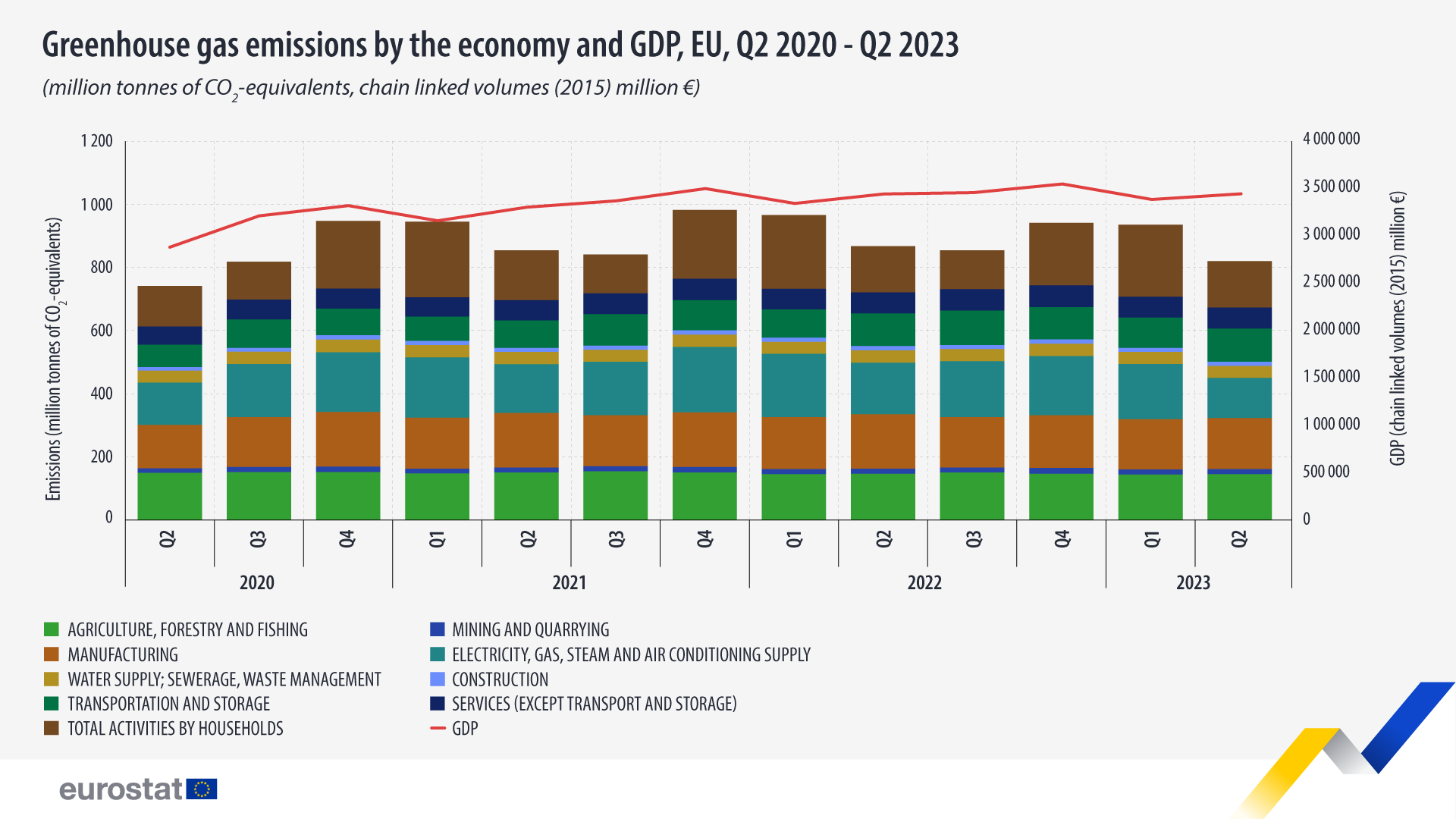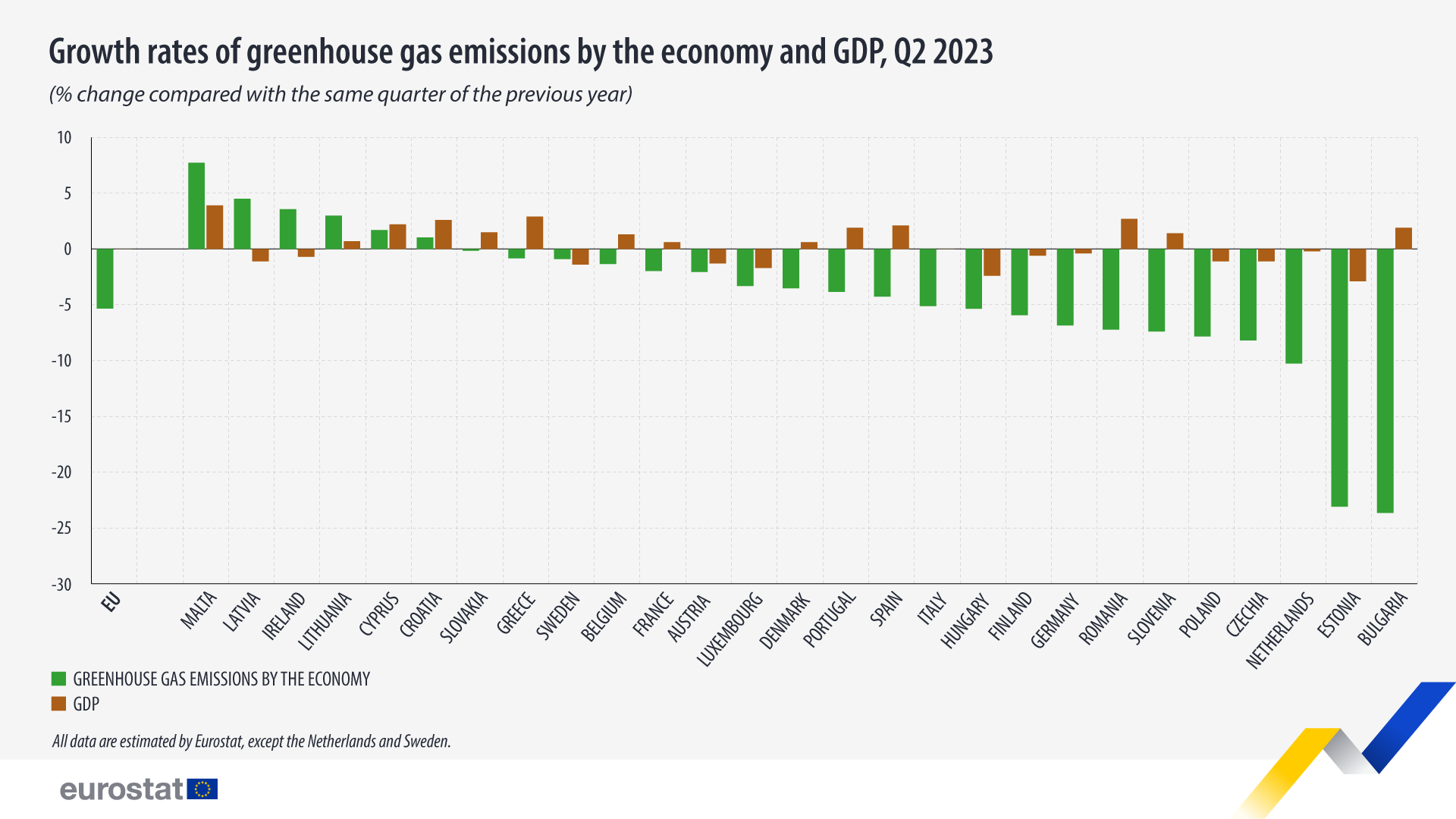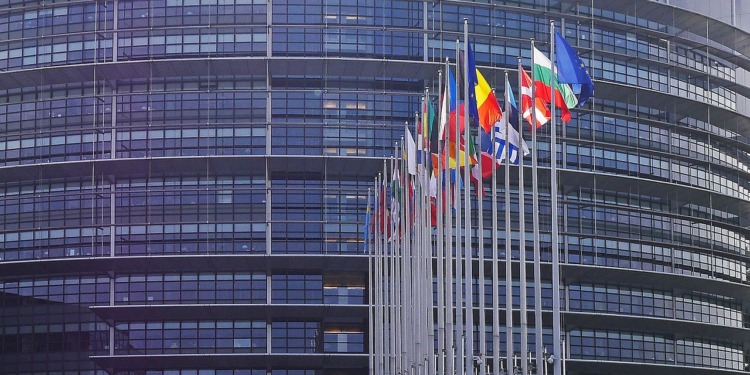In a positive turn of events, the European Union (EU) experienced a significant reduction in greenhouse gas (GHG) emissions during the second quarter of 2023.
According to the latest data published by Eurostat, the bloc’s economy accounted for 821 million tonnes of CO2-equivalents (CO2-eq) in Q2, marking a notable 5.3% decrease compared to the same quarter in 2022 when emissions stood at 867 million tonnes of CO2-eq.
This encouraging development comes alongside a stable gross domestic product (GDP), registering only a marginal variation of +0.05% in the second quarter of 2023 compared to the corresponding period in 2022.

Eurostat’s quarterly estimates for greenhouse gas emissions by economic activity provide valuable insights into the environmental progress of EU member states. Below are some of Eurostat’s key findings.
EU’s economic sectors and greenhouse gas emissions reductions
The economic sectors contributing the most to the EU’s greenhouse gas emissions in the second quarter of 2023 were:
- manufacturing (23.5%);
- households (17.9%);
- electricity, gas supply (15.5%);
- agriculture’ (14.3%);
- transportation and storage’ (12.8%).
Notably, emissions decreased in six out of nine economic sectors compared to the second quarter of 2022. The most substantial reduction occurred in the “electricity, gas supply” sector, with a remarkable -22.0% decrease.
On the flip side, the “transportation and storage” sector saw a modest increase of +1.7%.
Geographical Variances
Of the 27 EU member states, 21 recorded a decline in greenhouse gas emissions during the second quarter of 2023 compared to the same period in 2022.
The most significant reductions were observed in Bulgaria (-23.7%), Estonia (-23.1%), and the Netherlands (-10.3%).
Six EU countries, however, experienced an increase in emissions during this period. These include Malta (+7.7%), Latvia (+4.5%), Ireland (+3.6%), Lithuania (+3.0%), Cyprus (+1.7%) and Croatia (+1.0%).

Emissions and Economic Growth
Among the six countries that registered emissions increases, the following four saw their GDP increase alongside the emissions: Malta (+3.9%), Croatia (+2.6%), Cyprus (+2.2%) and Lithuania (+0.7%).
Among the 21 states that lowered their GHG emissions in Q2 of 2023, 10 also recorded a decline in their GDP. These include Estonia, Hungary, Luxembourg, Sweden, Austria, Czechia, Poland, Finland, Germany, and the Netherlands.
Italy, maintaining its GDP at the same level as the second quarter of 2022, successfully reduced its greenhouse gas emissions.
Impressively, 10 EU countries managed to simultaneously decrease emissions and grow their GDP. These include Denmark, France, Belgium, Slovenia, Slovakia, Bulgaria, Portugal, Spain, Romania, and Greece.
The latest data from Eurostat paints a positive picture of the EU’s environmental and economic efforts, showcasing that it is possible to achieve emission reductions while maintaining economic stability. These trends underscore the importance of continued commitment to sustainable practices as Europe works towards a greener and more resilient future.
Editor’s Note: The opinions expressed here by the authors are their own, not those of Impakter.com — In the Featured Photo: The European Parliament building in Brussels, Belgium. Featured Photo Credit: Needpix.










